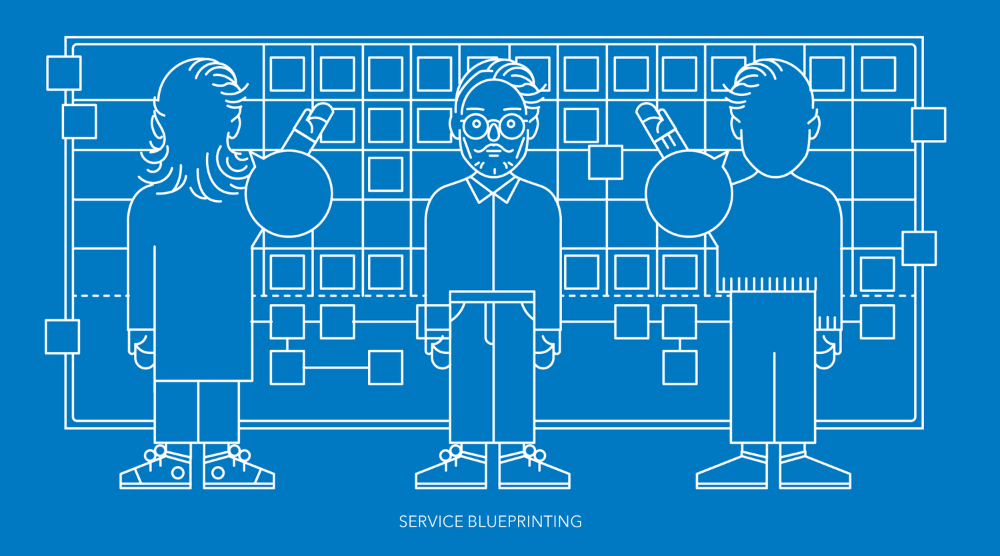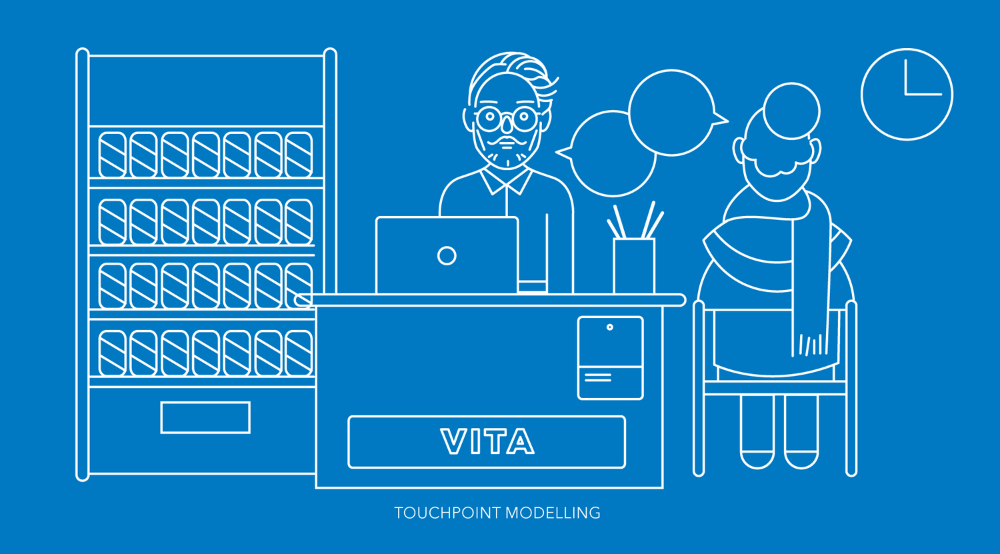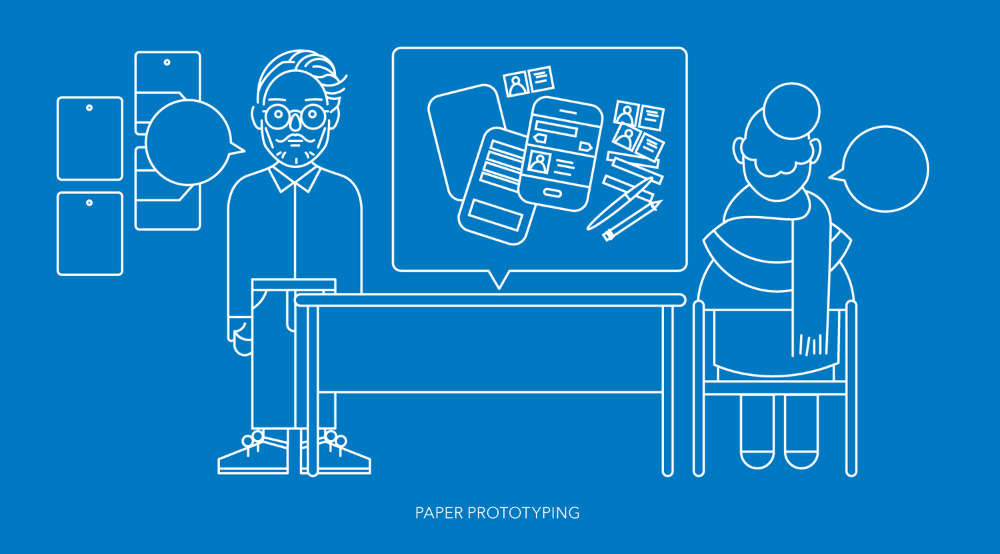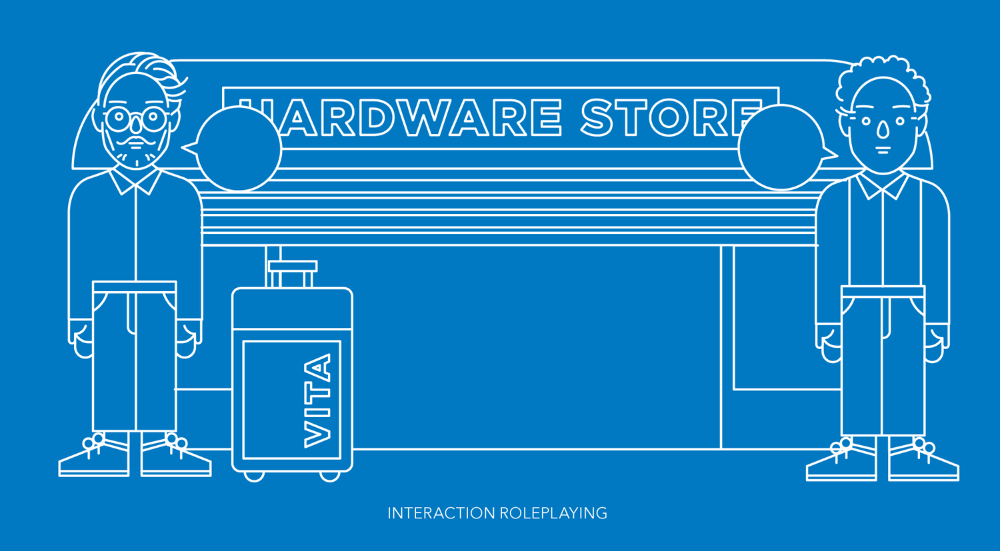Prototyping
The prototyping phase is when we begin to "try out" the ideas generated during a DFE project in order to see how they look, feel, and function outside of our heads and in the real world. This typically involves mocking-up interfaces, role-playing interactions, and engaging with potential users and other stakeholders to understand how they experience the new service(s) we are developing. Until we start to build, enact, or otherwise realize our designs in this way, we can only speculate about how they might actually work -- and how they could work better.
At this stage, it's important to remember that we are prototyping unfinished innovations as a way to develop, test, and refine them further, not piloting completed services to demonstrate, argue, or prove their value. Our goal in prototyping is not to "get it right" the first time, but to rapidly iterate, learn from, and improve upon our designs through low-risk, low-investment simulations and experiments. Involving stakeholders in this process provides critical insights from the people who our designs are intended to serve, gives them a stake in our process, and increases their willingness to implement, adopt, or otherwise support the outcomes of our project.
Tools + Techniques
SERVICE BLUEPRINTING
Before prototyping a new service, we need to understand all the elements and dynamics of the service in detail. Creating service blueprints helps us visualize how users, stakeholders, and touchpoints interact over time to create the desired service experience. Service blueprints are typically grid-like diagrams, with "front stage" user experiences and touchpoints depicted sequentially along the top row(s), and "backstage" provider/stakeholder actions aligned in parallel rows underneath. Each column represents a moment in the service, which can be examined, tested, and improved upon.
PAPER PROTOTYPING
Different types of touchpoints call for different types of prototyping. A physical kiosk, for example, can be prototyped by building and iterating upon a single, static model, while a digital app requires simulating multiple, interactive screens or states in a deliberate sequence or "user flow." To prototype these kinds of dynamic, digital touchpoints, we often make simple sketches or "wireframes" of the user-interfaces involved and then ask actual users to describe the experience of navigating through our sketches -- presented one at a time -- as if they were real pages of a website or menus of an app.
TOUCHPOINT MODELLING
Touchpoints are designed interfaces that facilitate interactions between users, providers, and other stakeholders of a service. They can be objects, environments, applications, communications, or combinations of things. These tangible components must be designed and integrated properly for a service to work as intended, so we always make sure to prototype them carefully. Rather than waste time or resources on details, we try to model the core features and functions of touchpoints as resourcefully as possible -- often using simple office supplies, repurposed objects, or free software.
INTERACTION ROLEPLAYING
Services are more than the sum of their touchpoints. They entail tangible interfaces and intangible interactions, both of which can be better configured and integrated through prototyping. Whenever possible, we invite users, providers, and other stakeholders to perform or "play" their intended roles in services that we're designing and testing. This sort of experiential prototyping allows us to rehearse, reframe, and refine key interactions, and it provides opportunities for us to explore how human factors -- such as ability, behavior, and emotion -- affect service performance and outcomes.
References + Resources
Prototype: Design and Craft in The 21st Century - Louise Valentine
The Ten Faces of Innocation [Chapter 2: The Experimenter] - Tom Kelly
Cultures of Prototyping - Michael Schrage
What Do Prototypes Prototype? - Stephanie Houde + Charles Hill
Innovation + Design Insights - Christian Bason
Tax Time Services Project
Resources Coming Soon!









